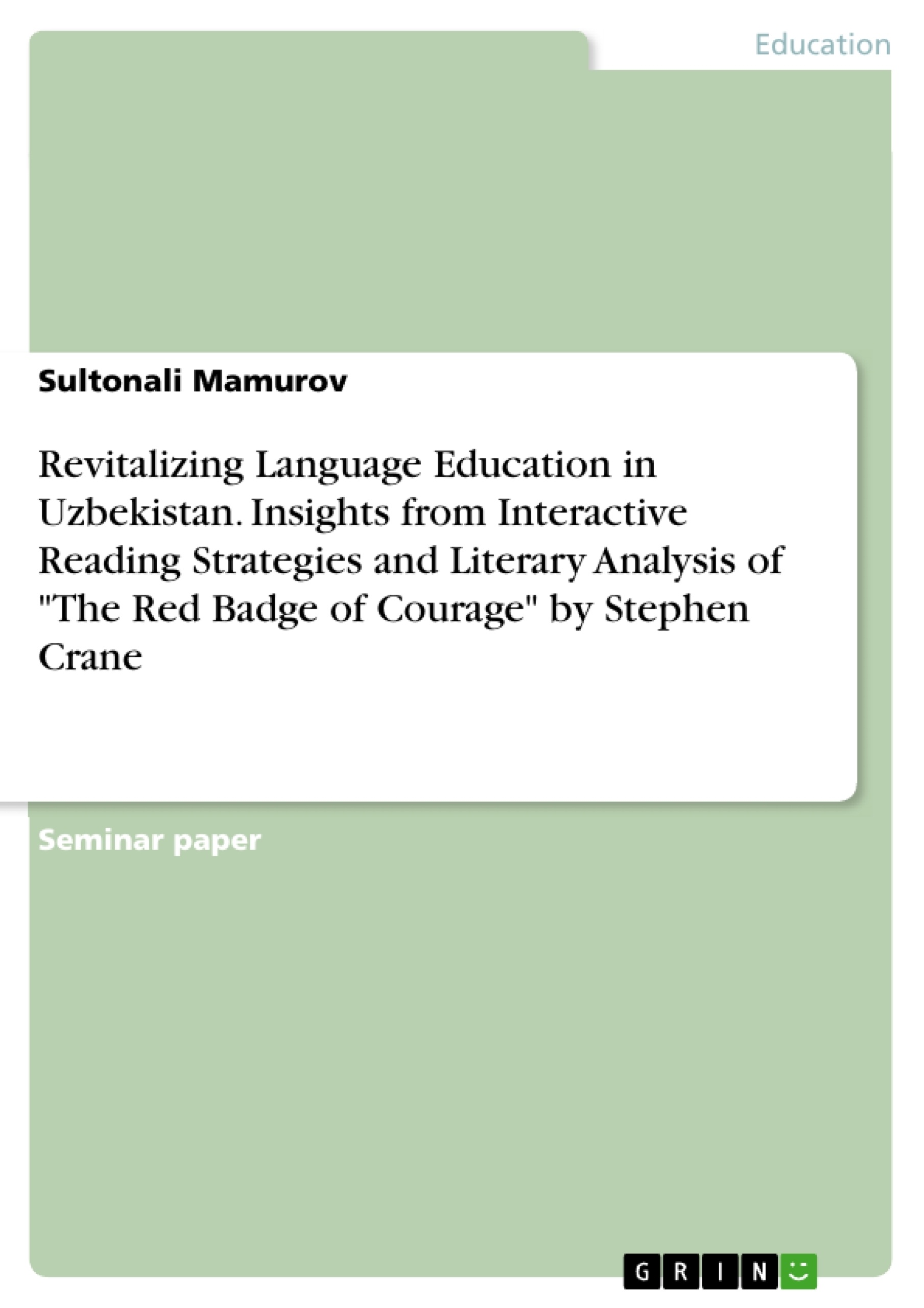The primary goal of this paper is to enhance language education in Uzbekistan by providing effective strategies for teaching and learning English through interactive reading activities. By analyzing different approaches to interpreting a literary classic like "The Red Badge of Courage", this work aims to offer theoretical insights applicable to the creation of educational materials, poems, and books. Furthermore, the practical results and conclusions derived from this study can be seamlessly integrated into literature seminars, contributing to the continual improvement of language education in the country.
The article begins with an overview of the educational reforms undertaken since Independence, highlighting the significance of the National Program for Cadre Training. It then delves into the practical aspects of the work, offering a comprehensive analysis of different approaches to defining and interpreting Stephen Crane's "The Red Badge of Courage". The exploration encompasses the wealth of the novel, the ambiguity within its vocabulary, and the prevailing rules that govern this literary masterpiece. Various perspectives on the work are considered, employing typological and morphological methods during investigation.
Inhaltsverzeichnis (Table of Contents)
- INTRODUCTION
- CHAPTER I. THE RED BADGE OF COURAGE BY STEPHEN CRANE
- 1.1. The Miracle of Stephen Crane
- 1.2. The Red Badge of Courage Characters
- CHAPTER II. THE PSYCHOLOGY OF WAR IN THE RED BADGE OF COURAGE
- 2.1. The power of society in The Red Badge of Courage
- 2.2. The concept of heroism in Stephen Crane's Red Badge Of Courage
- CONCLUSION
Zielsetzung und Themenschwerpunkte (Objectives and Key Themes)
The aim of the work is to analyze different approaches to the definition of the Red Badge of Courage by Stephen Crane. The object of the work is the wealth of the Red Badge of Courage by Stephen Crane, ambiguity of its vocabulary and the most common rules of the Red Badge of Courage by Stephen Crane. The subjects of work are various points of view on The Red Badge of Courage by Stephen Crane.
- The psychological impact of war on individuals.
- The nature of courage and cowardice.
- The complexities of heroism and the search for identity.
- The role of society and its influence on individual behavior.
- The realism and naturalism of Stephen Crane's writing style.
Zusammenfassung der Kapitel (Chapter Summaries)
The novel opens with a young Union soldier, Henry Fleming, who is eager to fight in the Civil War. He dreams of becoming a hero, but when the battle begins, his fear takes over and he flees the battlefield. Overwhelmed with shame, he seeks a "red badge of courage" - a wound that would validate his bravery.
The story follows Henry's journey as he tries to reconcile his actions with his desire for heroism. He encounters other soldiers who have experienced the horrors of war, including Jim Conklin, a fellow soldier who dies during the battle. Henry's cowardice becomes a source of deep guilt and self-loathing, and he ultimately learns that courage is not just about physical bravery but also about facing one's own weaknesses and inner demons.
Through Henry's experiences, the novel explores the psychological effects of war and the complex nature of courage. It examines the pressure of societal expectations and the struggle to maintain one's identity amidst the chaos of battle.
Schlüsselwörter (Keywords)
The Red Badge of Courage, Stephen Crane, Civil War, heroism, cowardice, fear, psychological realism, naturalism, societal expectations, identity, character development, war literature.
- Quote paper
- Sultonali Mamurov (Author), 2023, Revitalizing Language Education in Uzbekistan. Insights from Interactive Reading Strategies and Literary Analysis of "The Red Badge of Courage" by Stephen Crane, Munich, GRIN Verlag, https://www.grin.com/document/1419782



